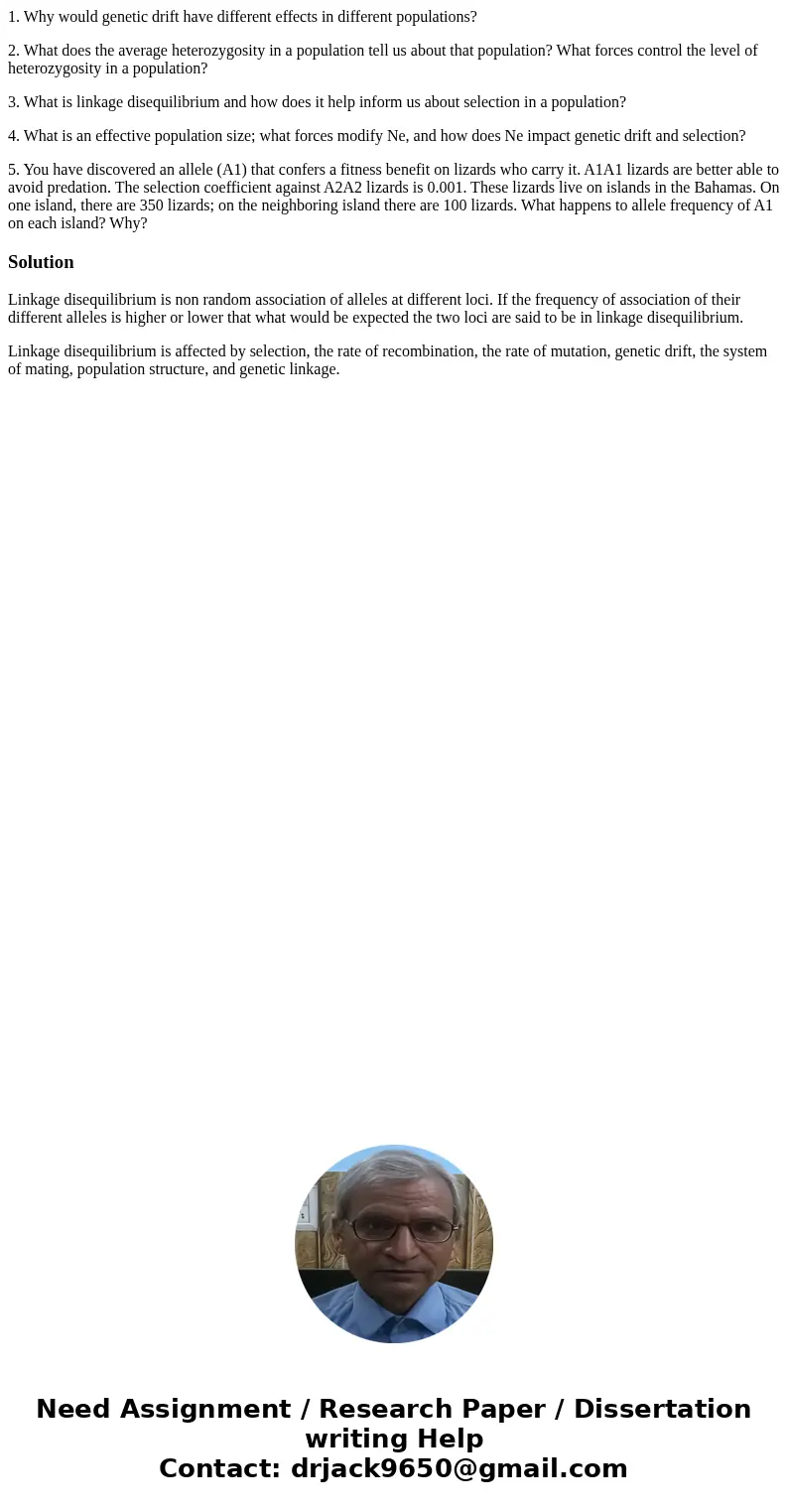1 Why would genetic drift have different effects in differen
1. Why would genetic drift have different effects in different populations?
2. What does the average heterozygosity in a population tell us about that population? What forces control the level of heterozygosity in a population?
3. What is linkage disequilibrium and how does it help inform us about selection in a population?
4. What is an effective population size; what forces modify Ne, and how does Ne impact genetic drift and selection?
5. You have discovered an allele (A1) that confers a fitness benefit on lizards who carry it. A1A1 lizards are better able to avoid predation. The selection coefficient against A2A2 lizards is 0.001. These lizards live on islands in the Bahamas. On one island, there are 350 lizards; on the neighboring island there are 100 lizards. What happens to allele frequency of A1 on each island? Why?
Solution
Linkage disequilibrium is non random association of alleles at different loci. If the frequency of association of their different alleles is higher or lower that what would be expected the two loci are said to be in linkage disequilibrium.
Linkage disequilibrium is affected by selection, the rate of recombination, the rate of mutation, genetic drift, the system of mating, population structure, and genetic linkage.

 Homework Sourse
Homework Sourse